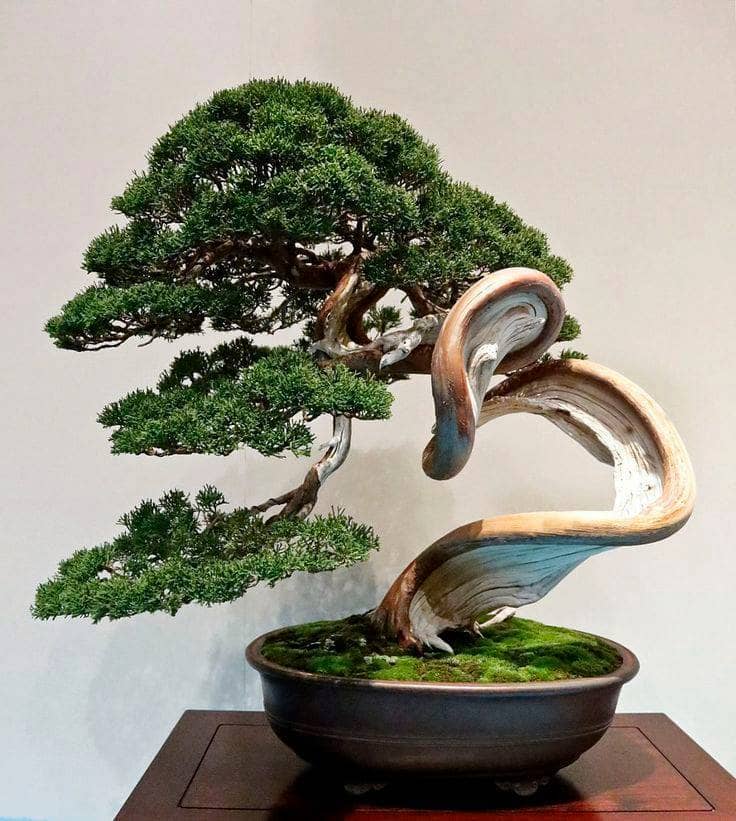I recently stumbled upon a wonderful book by Andy Rutledge about bonsai design. I have also recently spent a good chunk of time watching critique videos and seeing how others judge bonsai. While I’m not a professional in any sense of the word when it comes to bonsai, I have had fun looking at trees with the purpose of judging the tree and applying artistic design to what has been created.
I now plan to add a new tree every other week or so and continue a critique series so that others can watch and learn how I evolve. I’ll try to give information if I have it about the tree and also include both masterpieces and not-so-masterpiece-y trees as well.
Tree #1 – Juniper

What does the trunk communicate?
The trunk communicates a bending contorted growth pattern. The curve of the trunk gives the impression that the rocky path was handled gracefully.
What does the pot communicate?
The pot draws no attention away from the tree by being a neutral dark color that is not too ornate. The wider rim and smaller bottom suggests a feminine style. Overall the pot communicates “I am not the focus, but a complimentary piece.”
What does the foliage communicate?
The very rounded top continues the feminine traits that have been displayed in the trunk and pot.
Comments:
Very feminine tree in terms of curves, pot selection, and foliage shape
Emphasis on this tree is obviously on the trunk. Fantastic trunk.
While lots of junipers commonly have amazing deadwood, this trunk twisting as much as it does and having no “wasted” deadwood is beautiful and elegant.
Critique:
The only thing I can honestly critique about this tree is that the lower branch could be a bit more ramified vertically. It gives the appearance that it has the same shape as the top pads, but it could use a bit more vertical foliage or just be removed altogether.
